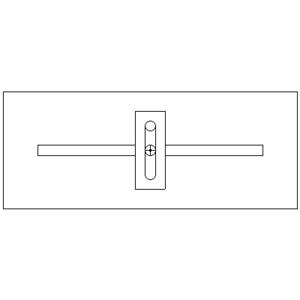Gallery opened: 17 May 2016 |
The Bourke Engine
| |
Gallery opened: 17 May 2016
Updated: 19 Oct 2019



 There have been several attempts to make IC engines using a scotch crank rather than the usual crank-and-connecting rod. There are some theoretical advantages, such as fewer moving parts, and an absence of side-forces on the piston, but the idea has not prospered. The concept is sometimes called a scotch yoke.
There have been several attempts to make IC engines using a scotch crank rather than the usual crank-and-connecting rod. There are some theoretical advantages, such as fewer moving parts, and an absence of side-forces on the piston, but the idea has not prospered. The concept is sometimes called a scotch yoke.
 | Left: Action of the scotch crank
|
One of the attempts was the Bourke engine, which has a very good Wikipedia page:The Bourke engine, and is generally better documented than most unconventional engines. This two-stroke engine was developed by Russell Bourke from the 1920s, but never reached the market. The Wikipedia article ends with an impressive list of the problems built into the design. While the Wikipedia article shows four cylinders arranged in a cross, most pictures of the Bourke engine show a horizontally-opposed flat four.
 | Left: The Bourke engine
|
Bourke obtained British and Canadian patents for the engine in 1939; see GB 514,842 and CA 381,959. He also obtained US Patent US 2,172,670 in the same year. Bourke died in 1968, leaving the engine to his friend Neilsen, who promised to continue its development. You can read a most intriguing account of how that worked out here.
There is a Bourke website at bourke-engine.com but none of the links seem to work.

OTHER SCOTCH-CRANK ENGINES
A scotch crank engine was designed by Brian Collins, of Perth, Australia. Popular Science, Jan 1990. This engine is also a two-stroke and will not do well when faced with emission limits.
A more recent project is the SyTech scotch yoke engine, which can be seen in an Autospeed article, dated 15 May 2001. So far over AUS$35million have been spent. The prototype appears to be a four-stroke.

|
|    
|